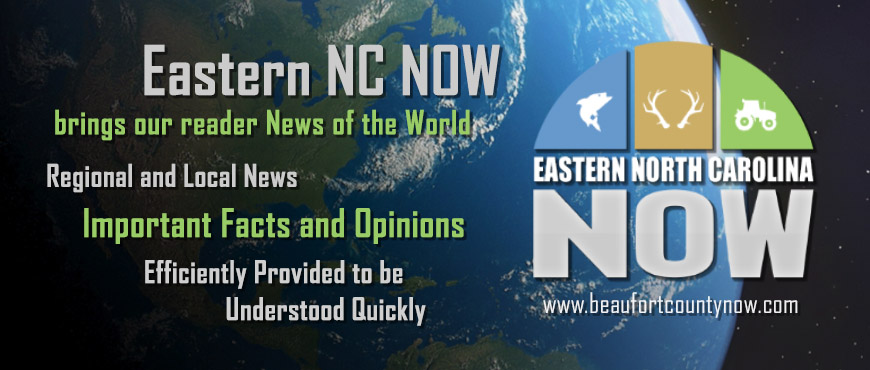Your Public Square Disclosing what is True, what is Real
It’s not all Charlotte and Raleigh
Publisher's note: This article appeared on John Hood's daily column in the Carolina Journal, which, because of Author / Publisher Hood, is linked to the John Locke Foundation.
North Carolina's two most-populous counties, Mecklenburg and Wake, are home to about 21 percent of the state's population and 28 percent of its jobs. Over the past four years, about 45 percent of the state's net new jobs were created in either Mecklenburg or Wake.
These two counties are obviously growing much faster than the state average. But do you find it surprising that most job creation in North Carolina is still occurring outside of Mecklenburg and Wake?
If so, you're not alone. In my experience, lots of people seem to believe that North Carolina's economic resurgence is bypassing most of the state, that Charlotte and Raleigh are where virtually all the action is. I've even heard some public officials say that Mecklenburg and Wake account for three-quarters or more of the state's recent job creation. This is a gross overstatement.
Growth rates do vary widely across North Carolina. From 2013 to 2017, employment has measured by the Census Bureau's survey of employers went up statewide by some 343,000 jobs, a rate of 8.5 percent. The national average for the period, by the way, was 7.2 percent.
Of North Carolina's 100 counties, just 20 matched or exceeded the statewide rate of job growth. Mecklenburg (+14.3 percent) and Wake (+14.1 percent) were certainly standouts. But the highest percentage-growth rates were actually in Davie (+23 percent), Cabarrus (+22.2 percent), and Pender (+15.2 percent). Moreover, among the counties adding jobs at a faster-than-average rate were places that really took it on the chin during the Great Recession, such as Swain, Jackson, and Catawba counties in the west and Nash County in the east.
On the other end of the scale, 30 North Carolina counties have lost rather than gained employment over the past four years. For the most part, they can be found where you'd expect, in rural parts to the west and east of the I-85 corridor. But that doesn't necessarily mean they are disconnected places. Many are traversed by at least one interstate highway. Some are actually next-door neighbors to one or more of the state's fastest-growing counties.
That leaves 50 counties somewhere in the middle, with positive but not necessarily sizzling rates of job growth. They include other populous North Carolina counties such as Durham (+8 percent), Forsyth (+4.8 percent), Guilford (+3.9 percent), and Cumberland (+2.2 percent).
But what about average pay? When I sorted the counties by wage growth from 2013 to 2017, I was surprised to find very little correlation with job growth. Some places with below-average rates of job creation posted some of the largest gains in average wages, such as tiny Tyrrell County (up 21.2 percent) and far-western Mitchell County (19.6 percent). On the other hand, while the southeastern counties of New Hanover, Brunswick, and Pender had comparatively strong job growth, their wage growth was below the statewide average.
It is understandable why such discrepancies could exist. Fast-growing places could be adding lots of entry-level jobs paying relatively lower salaries while still attracting young people from elsewhere with the hopes of career advancement ahead. Slower-growing places could have lost major employers of lower-skilled labor, which would have the effect of pushing the average wage up.
Nevertheless, these and other facts ought to challenge simplistic summaries of complex phenomena. Public policy helps to shape economic growth - there's no dispute about that. But the effects aren't massive, particularly in the short term.
Lawmakers shouldn't expect to create a new program, build a new road, or even cut an old tax and then get immediate, miraculous results. Nor can they count on being able to coax, cajole, or coerce a business or industry to locate in places that don't meet the economic needs of the enterprises in question.
Our two most-populous counties are responsible for a disproportionate share of North Carolina's recent economic gains. But other counties, small and large, are also experiencing robust growth. If politicians start out with bad assumptions, they'll produce bad answers even to very good questions.
Go Back
North Carolina's two most-populous counties, Mecklenburg and Wake, are home to about 21 percent of the state's population and 28 percent of its jobs. Over the past four years, about 45 percent of the state's net new jobs were created in either Mecklenburg or Wake.
These two counties are obviously growing much faster than the state average. But do you find it surprising that most job creation in North Carolina is still occurring outside of Mecklenburg and Wake?
If so, you're not alone. In my experience, lots of people seem to believe that North Carolina's economic resurgence is bypassing most of the state, that Charlotte and Raleigh are where virtually all the action is. I've even heard some public officials say that Mecklenburg and Wake account for three-quarters or more of the state's recent job creation. This is a gross overstatement.
Growth rates do vary widely across North Carolina. From 2013 to 2017, employment has measured by the Census Bureau's survey of employers went up statewide by some 343,000 jobs, a rate of 8.5 percent. The national average for the period, by the way, was 7.2 percent.
Of North Carolina's 100 counties, just 20 matched or exceeded the statewide rate of job growth. Mecklenburg (+14.3 percent) and Wake (+14.1 percent) were certainly standouts. But the highest percentage-growth rates were actually in Davie (+23 percent), Cabarrus (+22.2 percent), and Pender (+15.2 percent). Moreover, among the counties adding jobs at a faster-than-average rate were places that really took it on the chin during the Great Recession, such as Swain, Jackson, and Catawba counties in the west and Nash County in the east.
On the other end of the scale, 30 North Carolina counties have lost rather than gained employment over the past four years. For the most part, they can be found where you'd expect, in rural parts to the west and east of the I-85 corridor. But that doesn't necessarily mean they are disconnected places. Many are traversed by at least one interstate highway. Some are actually next-door neighbors to one or more of the state's fastest-growing counties.
That leaves 50 counties somewhere in the middle, with positive but not necessarily sizzling rates of job growth. They include other populous North Carolina counties such as Durham (+8 percent), Forsyth (+4.8 percent), Guilford (+3.9 percent), and Cumberland (+2.2 percent).
But what about average pay? When I sorted the counties by wage growth from 2013 to 2017, I was surprised to find very little correlation with job growth. Some places with below-average rates of job creation posted some of the largest gains in average wages, such as tiny Tyrrell County (up 21.2 percent) and far-western Mitchell County (19.6 percent). On the other hand, while the southeastern counties of New Hanover, Brunswick, and Pender had comparatively strong job growth, their wage growth was below the statewide average.
It is understandable why such discrepancies could exist. Fast-growing places could be adding lots of entry-level jobs paying relatively lower salaries while still attracting young people from elsewhere with the hopes of career advancement ahead. Slower-growing places could have lost major employers of lower-skilled labor, which would have the effect of pushing the average wage up.
Nevertheless, these and other facts ought to challenge simplistic summaries of complex phenomena. Public policy helps to shape economic growth - there's no dispute about that. But the effects aren't massive, particularly in the short term.
Lawmakers shouldn't expect to create a new program, build a new road, or even cut an old tax and then get immediate, miraculous results. Nor can they count on being able to coax, cajole, or coerce a business or industry to locate in places that don't meet the economic needs of the enterprises in question.
Our two most-populous counties are responsible for a disproportionate share of North Carolina's recent economic gains. But other counties, small and large, are also experiencing robust growth. If politicians start out with bad assumptions, they'll produce bad answers even to very good questions.
Latest Op-Ed & Politics
|
The Missouri Senate approved a constitutional amendment to ban non-U.S. citizens from voting and also ban ranked-choice voting.
Published: Friday, April 19th, 2024 @ 12:33 pm
By: Daily Wire
|
|
Democrats prosecuting political opponets just like foreign dictrators do
Published: Friday, April 19th, 2024 @ 10:58 am
By: John Steed
|
|
populist / nationalist / sovereigntist right are kingmakers for new government
Published: Friday, April 19th, 2024 @ 10:04 am
By: John Steed
|
|
18 year old boy who thinks he is girl planned to shoot up elementary school in Maryland
Published: Friday, April 19th, 2024 @ 8:46 am
By: John Steed
|
|
Biden assault on democracy continues to build as he ramps up dictatorship
Published: Friday, April 19th, 2024 @ 8:26 am
By: John Steed
|
|
illegal alien "asylum seeker" migrants are a crime wave on both sides of the Atlantic
Published: Thursday, April 18th, 2024 @ 8:10 am
By: John Steed
|
|
UNC board committee votes unanimously to end DEI in UNC system
Published: Thursday, April 18th, 2024 @ 7:54 am
By: John Steed
|
|
this is the propagandist mindset of MSM today
Published: Wednesday, April 17th, 2024 @ 3:04 pm
By: John Steed
|
|
Police in the nation’s capital are not stopping illegal aliens who are driving around without license plates, according to a new report.
Published: Wednesday, April 17th, 2024 @ 8:59 am
By: Daily Wire
|
|
same insanity that created Covid
Published: Wednesday, April 17th, 2024 @ 8:58 am
By: John Steed
|
|
Davidaon County student suspended for using correct legal term for those in country illegally
Published: Wednesday, April 17th, 2024 @ 7:23 am
By: John Steed
|
























